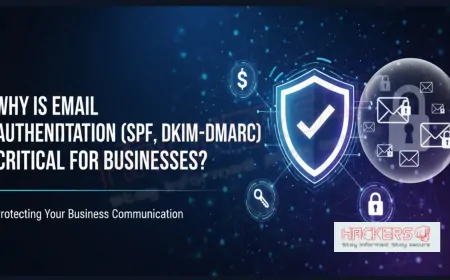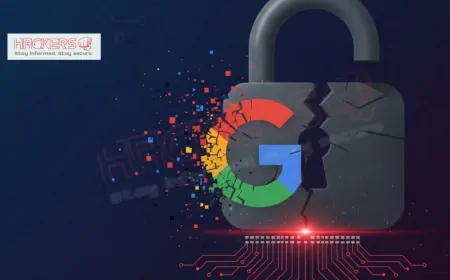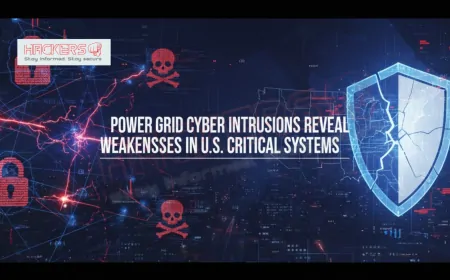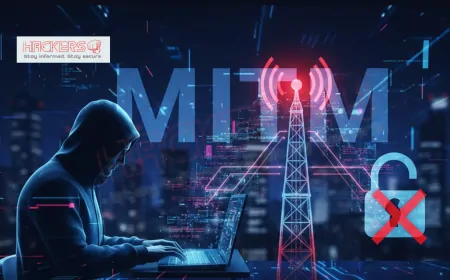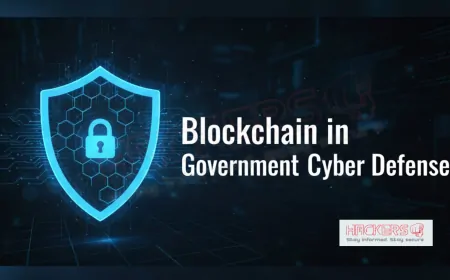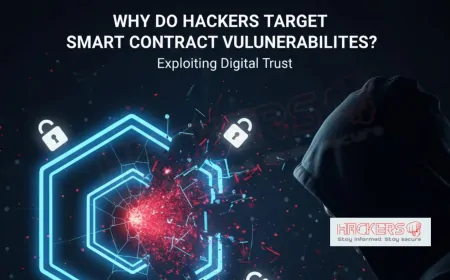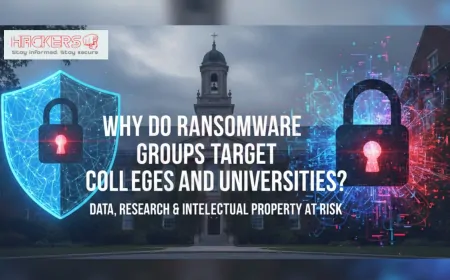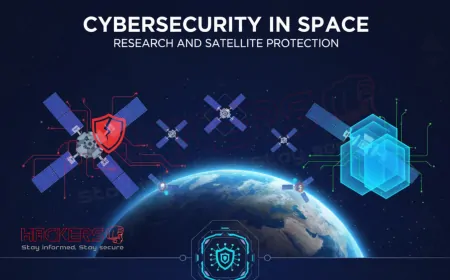Why Should Cybersecurity Awareness Start in Schools?
Picture this: a curious ten-year-old clicks on a flashy link in an email promising free game credits, only to unleash a virus that steals family photos and passwords. Stories like this happen more often than we think, and they highlight a pressing issue in our connected world. Kids today grow up with smartphones, tablets, and online classes, but many lack the tools to navigate the digital landscape safely. This is where cybersecurity awareness comes in, and starting it in schools could be the key to protecting future generations. In this blog post, we'll explore why teaching cybersecurity early matters, backed by recent insights and practical examples. We'll keep things clear and straightforward, so even if you're new to the topic, you'll walk away with a solid understanding of its importance.
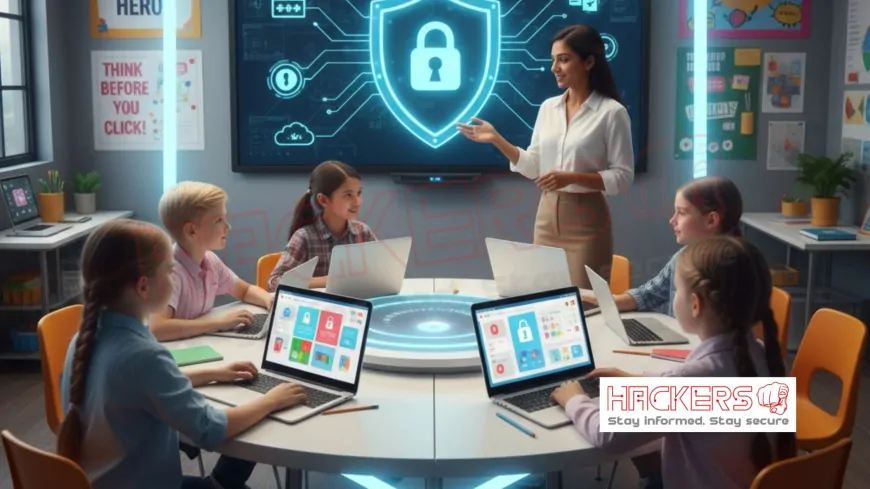
Table of Contents
- The Growing Digital World Kids Live In
- Common Cyber Threats Facing Students
- Why Start Cybersecurity Awareness in Schools?
- Benefits of Early Cybersecurity Education
- The Current State of Cybersecurity Education in K-12
- Examples of Successful Cybersecurity Programs
- Challenges in Implementing Cybersecurity Education
- Strategies for Integrating Cybersecurity into the Curriculum
- The Role of Parents and Teachers
- Future Trends in Cybersecurity Education
- Conclusion
- Frequently Asked Questions
The Growing Digital World Kids Live In
Children today are immersed in technology from a young age. By the time they reach school, many already have their own devices or access to family ones. Recent reports show that over a third of young people in 30 countries have experienced cyberbullying, with some even skipping school because of it. In wealthier countries, most 15-year-olds have internet access at home, though one in five still do not. This digital presence means kids are online for homework, socializing, and entertainment, but it also exposes them to risks.
Schools increasingly rely on digital tools for learning, from online platforms to virtual classrooms. This shift has accelerated since the pandemic, making cybersecurity a daily concern. However, without proper guidance, students might not recognize dangers like sharing personal information or downloading unsafe apps. Educating them early helps build habits that last a lifetime.
Think about social media: platforms like TikTok and Instagram are popular among tweens and teens. These sites can be fun, but they also host viral challenges that sometimes hide dangers, threatening safety and privacy. Anonymous chat rooms add another layer of risk, where predators might lurk. As kids spend more time online, the need for awareness grows. Starting in schools ensures a structured approach, reaching all students regardless of home environments.
Moreover, the digital divide persists. Not every child has equal access to technology or education about it. Schools can bridge this gap by providing resources and training. By integrating cybersecurity into everyday lessons, we prepare kids not just for today, but for a future where digital skills are essential.
This section alone underscores the urgency. With children facing these realities, delaying education isn't an option. Let's now look at the specific threats they encounter.
Common Cyber Threats Facing Students
Cyber threats to children are on the rise, and the numbers are alarming. In 2025, reports of online crimes against kids spiked, with generative AI related to child exploitation jumping from under 7,000 to over 440,000 cases. Schools themselves face frequent attacks: 82 percent of K-12 schools experienced cyber threats, with 14,000 security events reported.
One major issue is insider threats from students. About 30 percent of incidents involve stolen login details, and students cause 97 percent of these. This shows how lack of awareness can lead to accidental or intentional breaches. Cyberbullying is another big problem: as children age from 10 to 18, their risk increases by 2 percent every two years. One in five kids skips school due to it.
Phishing and malware target young users too. Kids might click on fake links in games or emails, leading to data theft. Ransomware hits schools, disrupting learning. Districts face five incidents per week on average. Emerging threats include unsafe online games and harmful trends powered by AI.
To illustrate, here's a table summarizing key statistics on cyber threats to children:
| Threat Type | Key Statistic | Impact |
|---|---|---|
| Online Exploitation with AI | Reports soared to 440,419 in 2025 | Increased child safety risks |
| School Cyber Incidents | 82% of schools affected | Disrupted education |
| Insider Threats by Students | 97% of stolen login cases | Internal breaches |
| Cyberbullying | 1 in 5 skip school | Mental health issues |
| School Attacks Frequency | 5 per week average | Operational disruptions |
These threats aren't just numbers: they affect real lives. Understanding them is the first step toward prevention, which leads us to why schools are the ideal place to start.
Why Start Cybersecurity Awareness in Schools?
Schools are where children spend much of their time, learning foundational skills. Introducing cybersecurity here makes sense because it reaches kids early, before bad habits form. Experts argue that integrating awareness into curriculums empowers students to recognize and prevent threats. It's about building a stronger workforce too, as demand for cybersecurity jobs outpaces supply.
Cyber incidents in education can have major socioeconomic impacts if not addressed. Schools face disruptions from attacks, affecting teaching and operations. Starting awareness young teaches online safety and prepares for careers in high-demand fields.
Moreover, cybersecurity education aims to inform users about risks when using technology. In K-12, it's vital for protecting students and data. By making it part of school life, we create a culture of safety that extends beyond classrooms.
Consider the alternative: without school-based education, many kids rely on trial and error or parents who might not be experts. Schools provide a consistent, expert-led approach. This foundation helps prevent personal and societal harms from cyber threats.
As we see the reasons, it's clear the benefits are substantial. Let's explore those next.
Benefits of Early Cybersecurity Education
Teaching cybersecurity young offers many advantages. First, it keeps kids safe online by teaching them to spot threats like phishing and social engineering. This awareness extends to personal life, reducing risks at home.
Second, it builds a human firewall. Educated students become the first line of defense, protecting sensitive data. It lowers breach risks and enhances knowledge and behavior.
Third, it prepares for future careers. With job demand high, early exposure sparks interest in cybersecurity fields. It also promotes innovation and better security solutions.
Fourth, it empowers responsible digital citizenship. Students learn best practices, reducing overall risk profiles. Benefits include stronger defenses against attacks and protected assets.
Fifth, it fosters a culture of security. When kids understand threats, they share knowledge with families, amplifying impact. Overall, early education creates safer communities and a prepared generation.
The Current State of Cybersecurity Education in K-12
In K-12 schools, cybersecurity education is growing but still limited. It's often infused into existing curricula rather than standalone courses. Demand for skilled workers drives this, yet supply lags.
Prevalence of attacks is high: 60 percent in secondary schools, 85 percent in further education. This highlights the need for better programs. Resources like CISA's initiatives standardize roles and strengthen workforce.
Many schools lack full-time staff or tools. Budgets and training are issues. However, progress is made through pilots and online resources.
Studies show varied implementation, with some high schools offering dedicated programs, but overall, it's patchy. More integration is needed to meet evolving threats.
Examples of Successful Cybersecurity Programs
Several programs show how effective school cybersecurity education can be. Purdue's K-12 initiatives include VR games and labs for hands-on learning.
High school summer programs cover digital forensics, cryptography, and competitions. Resources like CyberPatriot and Codecademy provide online access.
The FCC's Pilot Program funds cybersecurity for schools and libraries. Interactive lessons start in elementary school.
Case studies reveal landscape insights. Lessons cover wide topics for all grades. These examples prove engaging methods work.
Challenges in Implementing Cybersecurity Education
Implementing cybersecurity education faces hurdles. Budget limits and understaffed IT teams hinder progress. Many lack basic measures.
Curriculum overcrowding and digital divide are issues. Educators' varying awareness complicates things.
Online bullying and harassment add to challenges. Systemic risks need addressing. Preparedness and zero-trust are concerns.
Comprehensive approaches are key to overcoming these. With planning, schools can succeed.
Strategies for Integrating Cybersecurity into the Curriculum
To integrate effectively, start with age-appropriate lessons. Use games and real examples for engagement. Infuse into subjects like computer science or ethics.
Train teachers through workshops. Partner with organizations for resources. Implement policies for safe tech use.
Regular drills and updates keep it relevant. Encourage student-led clubs. Monitor progress with assessments.
These strategies make education practical and sustainable.
The Role of Parents and Teachers
Teachers deliver lessons and model safe behavior. They spot issues like bullying and guide students.
Parents reinforce at home, discussing online experiences and setting rules. Collaboration through meetings strengthens efforts.
Both roles are crucial for consistent messaging. Resources help them stay informed.
Future Trends in Cybersecurity Education
Future trends include AI integration for personalized learning. VR simulations will make training immersive.
Focus on quantum-resistant security grows. Global collaborations standardize curricula.
As threats evolve, education will adapt, emphasizing ethics and innovation.
Conclusion
To wrap up, starting cybersecurity awareness in schools is essential for protecting kids in a digital age. We've seen the threats, benefits, current state, examples, challenges, and strategies. By addressing these, we build safer futures. Schools, parents, and communities must work together. Let's prioritize this education to empower the next generation against cyber risks.
What is cybersecurity awareness?
Cybersecurity awareness involves understanding digital threats and how to protect against them, like recognizing phishing or using strong passwords.
Why teach cybersecurity in schools?
Schools reach kids early, building safe habits before risks increase, and prepare them for a tech-driven world.
How do cyber threats affect children?
Threats like cyberbullying and exploitation can harm mental health, privacy, and safety, leading to skipped school or worse.
What are common cyber threats for students?
Phishing, malware, cyberbullying, and insider breaches from stolen logins are frequent issues.
Can early education prevent cyber attacks?
Yes, it teaches recognition and prevention, reducing chances of falling victim to threats.
What benefits does early awareness provide?
It enhances safety, prepares for careers, and fosters responsible digital citizenship.
How is cybersecurity taught in K-12?
Often infused into existing classes, with some standalone programs using games and labs.
Are there successful school programs?
Yes, like CyberPatriot competitions and Purdue's VR modules.
What challenges do schools face?
Budget limits, lack of staff, and curriculum overcrowding are key hurdles.
How can teachers integrate cybersecurity?
Through interactive lessons, simulations, and tying to other subjects.
What role do parents play?
They reinforce lessons at home and monitor online activities.
Is cybersecurity education mandatory?
Not everywhere, but growing initiatives aim to make it standard.
How often do schools face attacks?
Average of five incidents per week, disrupting operations.
What stats show the need for education?
82 percent of schools hit by threats, with student insiders common.
Can kids learn cybersecurity through games?
Absolutely, programs use VR and competitions for fun learning.
What future trends are emerging?
AI personalization and quantum security focus.
How does awareness help careers?
It sparks interest in high-demand jobs, addressing workforce shortages.
Are online resources available?
Yes, sites like Cybrary and Codecademy offer free tools.
What about cyberbullying prevention?
Education teaches recognition and reporting, reducing incidents.
Why is this urgent in 2025?
Rising AI threats and attacks make early protection critical.
What's Your Reaction?







